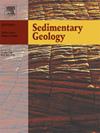A new type of dolomicrite envelope formed in Oligocene lacustrine sediments and its significance for preserving porosity, Bohai Bay Basin, North China
Abstract
Micrite envelopes are common early diagenetic features in marine carbonate grains. Most case studies of micrite envelopes focus on those with calcium-carbonate compositions. This paper documents a new type of lacustrine dolomicrite envelopes, coating both terrigenous grains and bioclasts, which developed in the upper Shahejia Formation of early Oligocene age in the middle of the Bohai Bay Basin. These dolomicrite envelopes on grains in a lacustrine mixed sedimentary environment are puzzling for their formation and linkage with the porosity preservation of porosity among grains. We investigate the microstructure and formation mechanism of these dolomicrite envelopes that coat grains through the study of the mineralogy, petrology and porosity characteristics. These studies show that there are two occurrences of the dolomicrite envelopes, i.e., coating on detrital grains and coating on carbonate grains, with a multi-layer microstructure. A potential two stage model to interpret the formation of dolomicrite envelopes incorporates an initial illite coating followed by dolomite encrustation. The illite coating played an important role in the precipitation of the dolomite. Post-envelope diagenetic processes include sparry cementation and destructive dissolution. The quantitative content of dolomicrite envelopes positively correlates with the preserved porosity, which suggests that their formation contributed to resisting compaction and protecting porosity among grains. Indeed, the dolomicrite envelopes appear to have aided in maintaining a kind of extremely high-quality reservoir for hydrocarbon exploration within the Shahejia Formation of the Bohai Bay Basin. In addition, the coating film seems to be conducive to the exchange of anions, thereby resulting in the dissolution of interior feldspar-, bioclast- or ooid-grains. In summary the Shahejia Formation of the Bohai Bay Basin provides a new type of dolomicrite envelope on grains in a lacustrine setting.

 求助内容:
求助内容: 应助结果提醒方式:
应助结果提醒方式:


